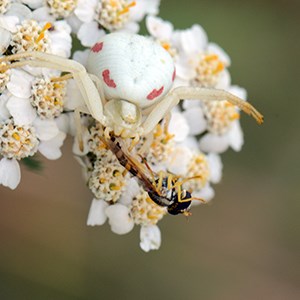Contact
mattias.jonsson@slu.se, 018 - 67 2450

Five hypotheses on why natural habitats sometimes fail to enhance pest control has been put forward in a new study. The relative importance of natural habitat for biocontrol can vary dramatically depending on the type of crop, pest, predator, land management and landscape structure.
Today, 38 % of Earth’s terrestrial area is agricultural land and we are facing dramatic declines in global biodiversity and associated ecosystem services. This is largely due to losses in natural habitats. By maintaining natural habitats next to agricultural lands, the idea is that wild biodiversity can be maintained and that the natural habitats provide ecosystem services such as pollination and pest control in the crops.
However, ecologists and farmers often have different views about the value of natural habitats. While ecologists are positive for the reasons above, farmers often see natural habitats as a waste of potential cropland, barriers for mechanization, as a source of pests and diseases and thereby an economic loss.
While natural habitats have been shown to increase pest control in many systems, this is unfortunately not always the case. Therefore, researchers from Germany, Canada, USA, France, Australia, New Zealand and Sweden investigated when and how natural habitats can fail to support biological pest control.
Each hypothesis was illustrated with several case studies from the literature.
Even though there may sometimes be problems with natural habitats, there are also many examples in the literature where the amount and configuration of natural and semi-natural habitat in agricultural landscapes helps to enhance pest control and reduces probabilities of pest outbreaks.
– It is important to understand where and when natural habitat is helpful for biological control. We suggest management regimes that can help improve the chances that biological control will help us meet future food demand while, at the same time, preserving the environment and ecosystems. For example, reducing pesticides and replacing invasive flora with native flora at a local scale, and increasing habitat availability and crop diversity on a landscape scale may be very helpful, says Mattias Jonsson, one of the researchers behind the study.
mattias.jonsson@slu.se, 018 - 67 2450